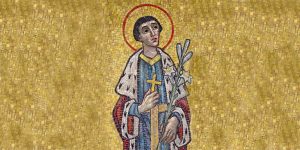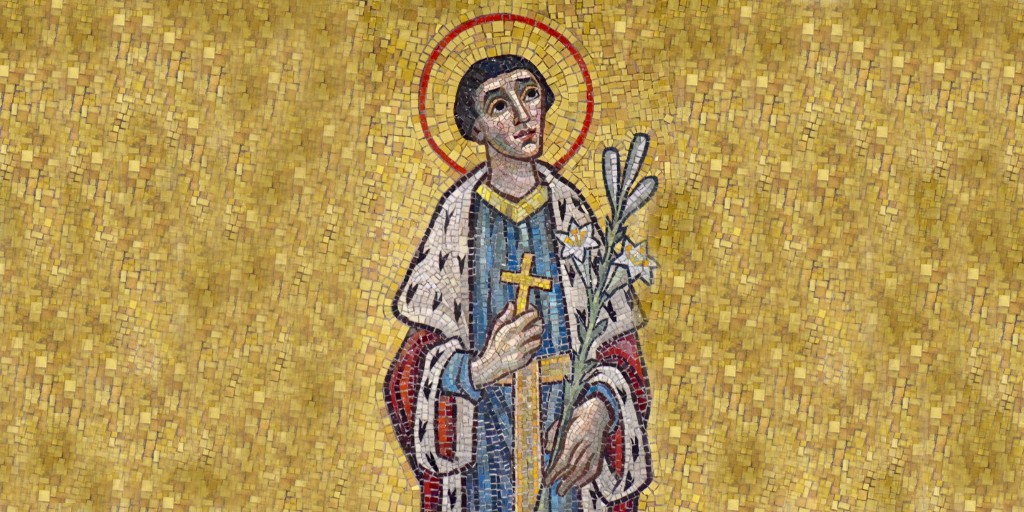
How much do you know about the lives of the saints celebrated during the month of March?
From Saint Katharine Drexel and her heart for Native Americans, to Saint Louise de Marillac and her work with the underprivileged in Paris, these saints and their legacies remind us to be open to God’s call upon our lives, wherever it may lead us.
Today, we invite you to read more about five saints with feast days this month and be encouraged by their lives of devotion.
March 3 – Saint Katharine Drexel
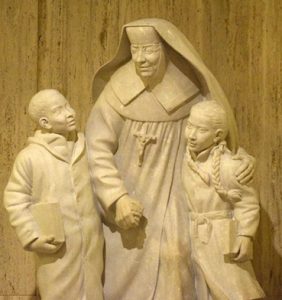
Born into an affluent Philadelphia banking family in 1858, Saint Katharine Drexel was known for her commitment to racial justice and her educational efforts for minority groups in America. During her family’s travels across the western United States, Katharine was struck by the poor living conditions endured by Native Americans on reservations. Seeking to help, she became an unflagging advocate for minorities, crusading for better educational opportunities and standing against racial discrimination and injustice. In 1894, she opened the first mission school for Native Americans in New Mexico, and in 1915, she founded Xavier University, an institution of higher learning for African Americans in New Orleans. She also decided to use her inheritance to establish the Sisters of the Blessed Sacrament in 1913.
By the start of World War II, she had founded schools for African Americans in 13 states, and 50 schools for Native Americans in 16 states. Katharine lived to be 97, and in 2000, was the second American-born saint to be canonized. The patroness of racial justice and philanthropists, she is portrayed in the Hall of American Saints, the Trinity Dome, and the Crypt Church Sacristy.
March 4 – Saint Casimir of Poland
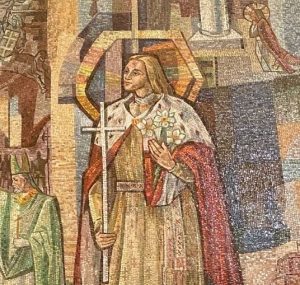
Known for his life of simple devotion and heart for the poor, Saint Casimir of Poland is beloved as the patron saint of Lithuania and Lithuanian youth. Born in Poland in 1458, Prince Casimir showed a remarkable inclination towards religious life from an early age, praying often with great devotion, listening attentively to spiritual teaching, and dedicating himself to charity projects for the poor. A thoughtful young ruler who loved peaceful contemplation rather than military conquest, he demonstrated a perceptive wisdom beyond his years.
After a failed attempt to lead an army as a young man, Casimir was convinced of the futility of armed conflict and resolved to dedicate himself to a more enduring enterprise. He poured his energies into prayer, contemplation, and the study of the Scriptures until he died from tuberculosis at the young age of 26. Today, he stands as a shining example of heroic virtues. Saint Casimir is portrayed in the Basilica in the Our Lady of Šiluva Chapel and the Our Lady of Czestochowa Chapel.
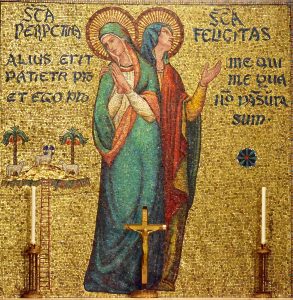
March 7 – Saint Perpetua and Saint Felicity
Saints Perpetua and Felicity, a young noblewoman and her slave, lived in Carthage during the reign of emperor Severus in the early 200s. When they were discovered professing the name of Christ, Perpetua and Felicity were arrested. Prior to their arrest, the women had been studying the Scriptures and were preparing for baptism. They were baptized in prison by their teacher, who was imprisoned with them, and their faith so inspired the prison warden that he converted to Christianity. Though they were sentenced to death, with God’s peace in their hearts, the women remained serene in the face of their fate. At first, the two were thrown into an arena of wild animals, but they were not killed. Tragically, the women were later martyred when emperor Severus commanded that they be put to death by the sword.
March 15 – Saint Louise de Marillac
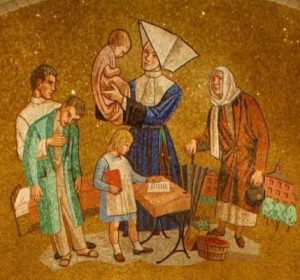
Born in France in 1591, Saint Louise de Marillac is known for founding the Daughters of Charity with Saint Vincent de Paul. After the death of both her parents at a young age, Louise was orphaned at age 15. Alone in the world with no means of supporting herself, she married Antony Le Gras, the queen’s secretary, and their marriage soon blossomed. However, when illness took Antony’s life, Louise was left a widow. Some time later, in 1623, she joined Vincent de Paul in a project ministering to the ill and indigent in Paris. Together, they were a powerful force for God. Realizing that their projects required more than just part-time volunteers, they gathered a community of women who dedicated their lives completely to the service of the sick and impoverished. Unlike a typical religious order, the order was not based in a convent. The Daughters of Charity, as they called themselves, continued to grow throughout Louise’s lifetime, and after her death in 1660. Today, it includes thousands of members across the globe, continuing Louise’s heart for humanitarianism. St. Louise is the patroness of Christian social workers and is portrayed in the Basilica in the St. Louise de Marillac Chapel.
Sources:
Butler’s Lives of Saints, ed. Bernard Bangley.
The Passion of Perpetua and Felicity, translated by W.H. Shewring, accessed via Fordham University.
The Way of Saints, Tom Cowan.

